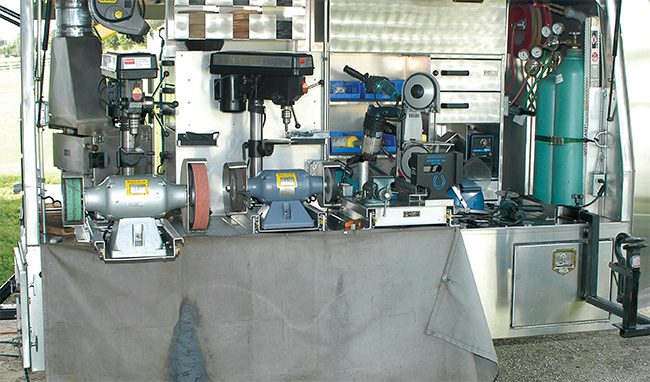American Farriers Journal
American Farriers Journal is the “hands-on” magazine for professional farriers, equine veterinarians and horse care product and service buyers.

Ever since the farrier trade evolved from largely a stationary profession to a mobile one, the shoeing rig has become a necessity for most practices. The farrier rig must be equipped with necessary tools and adequate supplies to handle the horses and their needs forecast for that day.
Over the years, new ideas have been introduced to provide a more complete workstation. The last couple of decades have seen great innovations in rigs to address the needs of the mobile farrier. How has rig design been influenced by the changing needs of farriers?
“There is no doubt that a lot of guys are going down in size,” says John Halko, CEO of Georgia Farrier Supply in Jasper, Ga. “I’m seeing fewer duallies, and instead seeing more short-bed trucks.”
He sees the major driver of the downsizing trend as fuel prices.
“Twenty years ago, when fuel was around 80 cents a gallon, long-bed trucks and duallies were the thing,” he recalls. “But now in the U.S., fuel is approaching $4 a gallon. Fuel is a commodity that we depend on. For most farriers, fuel is an incredibly big part of weekly expenditures. Not counting repairs, a lot of farriers are putting $50 to $60 a day into their trucks. If you are pulling a trailer, that will add to it.”
He also sees more farriers moving to a V6 or V8 truck to pull trailers rather than a larger model truck. The change to a smaller…